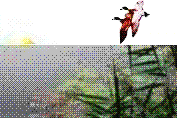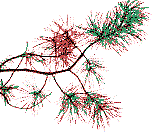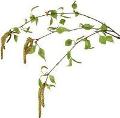Новости охоты, рыбалки. Реклама

Shotguns, equipment of the hunter. A gun of the hunter
(О зарубежных охотничьих ружьях. Подробнее можно почитать и по ссылке в конце статьи)
The doublet
In Britain and in the early days of American shootings, the double was considered the standard smoothbore. Its virtue was that in a single gun, having one fit, stock length, trigger-pull, and feel, the shooter had ;i choice of two degrees of choke and two quick shots.
The double is still preferred by many shooters. It comes in all standards gauges, in a variety of chokes, and in all grades from plain to fancy. Doubles begin at around $75 and run to several thousand dollars for custom-grade guns with gold and silver decoration and engraving.
The slide action
The repeating, slide-action shotguns took the fancy of American shooters around the turn of the century and has grown in popularity ever since.
The Winchester Model 97 hammer shotgun was largely responsible and has remained one of the most popular models ever built.
Advantages of a repeater were obvious. Up to a half-dozen shots were quickly available, in an era when birds were numerous and game bags liberal. More, the repeater utilized only a singles trigger as opposed to the long-standard twin triggers of the double, and it had the advantage of a single sighting plane. Its lone disadvantage, compared with the double, was that only one degree of choke was available.
Noble Model 420 double-barreled shotgun.
The popularity of the slide-action repeater has continued ever since. The basic change in the slide-action shotgun has been that it was made hammerless, for safety and appearance. It is hard to surpass a good slide-action shotguns for any kind of wing shooting.
Slide-action shotguns (from top): Winchester Model 12 Field, Remington Model 870AP, Ithaca Model 37.
The autoloader
The genius of the gun inventor John M. Browning was responsible for the self-loading, or automatic shotgun. He modified the slide action by harnessing the kick, allowing the recoil of the gun to eject the empty shell and reload. Besides the autoloader sold under the Browning name, Browning patents were also sold and used by other manufacturers in the productions of similar guns.
The biggest change since Browning's original auto has been the shift from a mechanically operated mechanism to a gas-operated action, accomplished in the fairly recent Winchester Model 50 self-loading shotgun.
Autoloading shotguns: (from top) Browning Automatic-5, Remington Model 58ADL, Savage Model 775-SC.
A feature stressed in the sale of autoloading shotguns was its speed of fire. Actually, a good shotgun man could operate a slide-action repeater and get on target as fast as one could with the auto. The real advantage of the autoloader was that all thought of reloading could be disregarded in fast shooting, and that the use of recoil in operating the mechanism appreciably reduced that same recoil.
Self-loading shotguns in their original styles were not as streamlined along the sighting plane as repeaters. That is, the receiver, due to the straight back-thrust of the barrel-bolt, had to be high, the barrels somewhat lower, and a ramp front sight elevated to conform to the receiver's height. This fault was alleviated by using an elevated rib. However, many shooters claimed that the high-rising front sight, after a dip along the barrel, was a real advantage in pointing. Often larger sighting blocks were installed to augment the advantage. Later models of the self-loader have been made more streamlined in appearance, and resemble the slide-action, hammerless repeaters.
The originals self-loaders, like the repeaters, were made to hold many shells; the autoloaders five. With dwindling waterfowl supplies, restrictions were made and both models were plugged to an overall capacity of no more than three shells in chamber-and-magazine. Today's self-loaders are built to that smaller capacity.
Current prices for slide-action shotguns begin around $90, with prices for autoloaders starting around $125. With either, one may go as high as he wishes, depending upon styles, engraving, and accessories.
The over-under
Interest in the over-under shotguns increased with the manufacture of a reasonably priced American over-under, and the federal restriction on waterfowl shooting requiring the shotgun to be limiteds to three shells. The over-under had the repeating shotgun's advantage of a single sighting plane; it had the double's advantage of two degrees of choke; and it now approached the auto and slide action's amount of firepower. Presently, there is a growing use of the over-under, both for upland-bird and waterfowl shooting. Most over-unders have single triggers. Prices for over-under shotguns begin at $150 for the plainer models.
Over-under shotguns: Browning Superposed (top), Italian-made Beretta Silver Snipe.
The bolt action
Stevens Model 85 bolt-action shotgun.
Bolt-action shotguns are relatively inexpensive to manufactures, and were based on the popularity of military bolt-action rifles. They come in either clip or tube magazine, are ordinarily "rougher" in functioning than the slide-action and autoloading repeaters, but are worth their modest cost for the beginner, or the person who cannot afford a more expensive gun. Bolt-action repeating shotguns cost approximately $40.
The single-shot
The single-shot, hammer type of shotgun is one of the least expensive, but is an ideal beginner's gun. His limitation to but one shot without reloadings is often a blessing, both for safety reasons and to make him shoot better. Many of today's veteran scattergun artists started out as boys with such a single-shot, likely in "long Tom" barrel length.
Barrels in modern shotguns vary in length from 25 to 32 inches. The longest barrels are used mostly in waterfowl shooting. The biggest gauges ordinarily have the longest barrels, and the popular length is 28 or 30 inches for most field shooting. The longest tubes retain the shot-velocity a trifle better, but often this advantage is more than compensated for in the shorter barrels by virtue of their increased handiness.
Winchester Model 37 single-shot shotgun (top) and the Stevens Model 94 single-shot shotgun.
Chokes
A vital part of the shotgun is its choke—the constrictions in bore size at the muzzle. A shotgun having no choke would be fit only for use as a riot gun. One with too much choke, likewise, would funnel-and-spray its charge over a wide area and be similarly useless.
Chokes are of three types: standard boring, swage choke, and recess choke. In a standard boring, the constriction is begun from 2 to 3 inches behind the muzzle. The bore proper is tapered slowly into a mild cone, or "lede," reducing the tube's inside diameter by a few thousandths of an inch. From the forwards, smaller end of the lede to the muzzle, the barrel is left untapered and of this smaller diameter. This final section may run in length anywhere from 1/2 inch to an inch or more, and is called the "parallel."
This system of boring was accidentally hit upon by the late Fred Kimble, one of the greatest shotgun artists of all time, while he was really trying to ream all the choke out of a barrel, and has never been improved upon.
A swage choke is a simple constriction in barrel size, put onto the muzzle end by cold-swaging the barrel to a smaller diameter. It is a make-shift, usually placed on inexpensive guns or sawed-off weapons.
The recessed choke is a mild, barrel-like shape bored into a barrel an inch or so behind the muzzle, with both the bore proper and the parallel left identical in diameters. Both a recessed choke and a swage choke are sometimes useful in salvaging a barrel which has been cut off at the muzzle end behind the choke. A far better way of helping the gun, however, is to install a choke device, as we'll come to.
The extent of choke in the barrel determines the spread or density of the pattern at a given range. Chokes range from full, improved-modified, modified, quarter choke, and improved cylinder, to straight cylinder. That is in theory. Actually these borings overlap; charges and patterns will vary from one brands of shell to another; and a straight-cylinder choke usually has some degree of constriction.
The criterion for a full-choke, 12-gauge shotgun is that it should put 70 per cent of the total number of pellets in a shot charge into a 30-inch circle at 40 yards. Many full-choke guns will do better than that, and some gun makers will guarantee a greater percentage.
Improved-modified choke is supposed to pattern 65 per cent; modified, 60 per cent; quarter choke 50 per cent; improved cylinder 45 per cent; and cylinder 35 per cent.
In order to give the shooter having a single-barreled shotgun a variety of chokes, several variable-choke devices have been perfected. Some of the most popular are the Cutts Compensator, the Poly-Choke, and the Weaver. Savage and Mossberg currently builds some models of their shotguns with integral choke devices.
Variable-choke devices are of two basic designs. One type has a series of ventilated slots or holes, plus individual tubes containing built-in degrees of choke, which may be interchanged. The other type, with or without the series of ventilated slots or holes, is based on the principle of a collet which
may be screwed down by degrees onto separated or split ends of a tube, giving the desired constriction.
These devices are installed by threading the unit onto the threaded end of a barrel which has been cut off behind the original choke. In either type, almost any degree of choke may quickly be had, the ranges often including full full-choke, or extra full-choke. Their use converts the single gun into one of many uses. An addeds advantage of a ventilated choke devices is that it reduces recoils.
Materials are used: http://www.huntingguns.net/
See also:


ПОИСК ПО САЙТУ:
ПОЛЕЗНО ЗНАТЬ
Видео:




Использование материалов сайта возможно при размещении активной ссылки
©2009 - 2025. Охота, рыбалка, природа - Информационный портал

